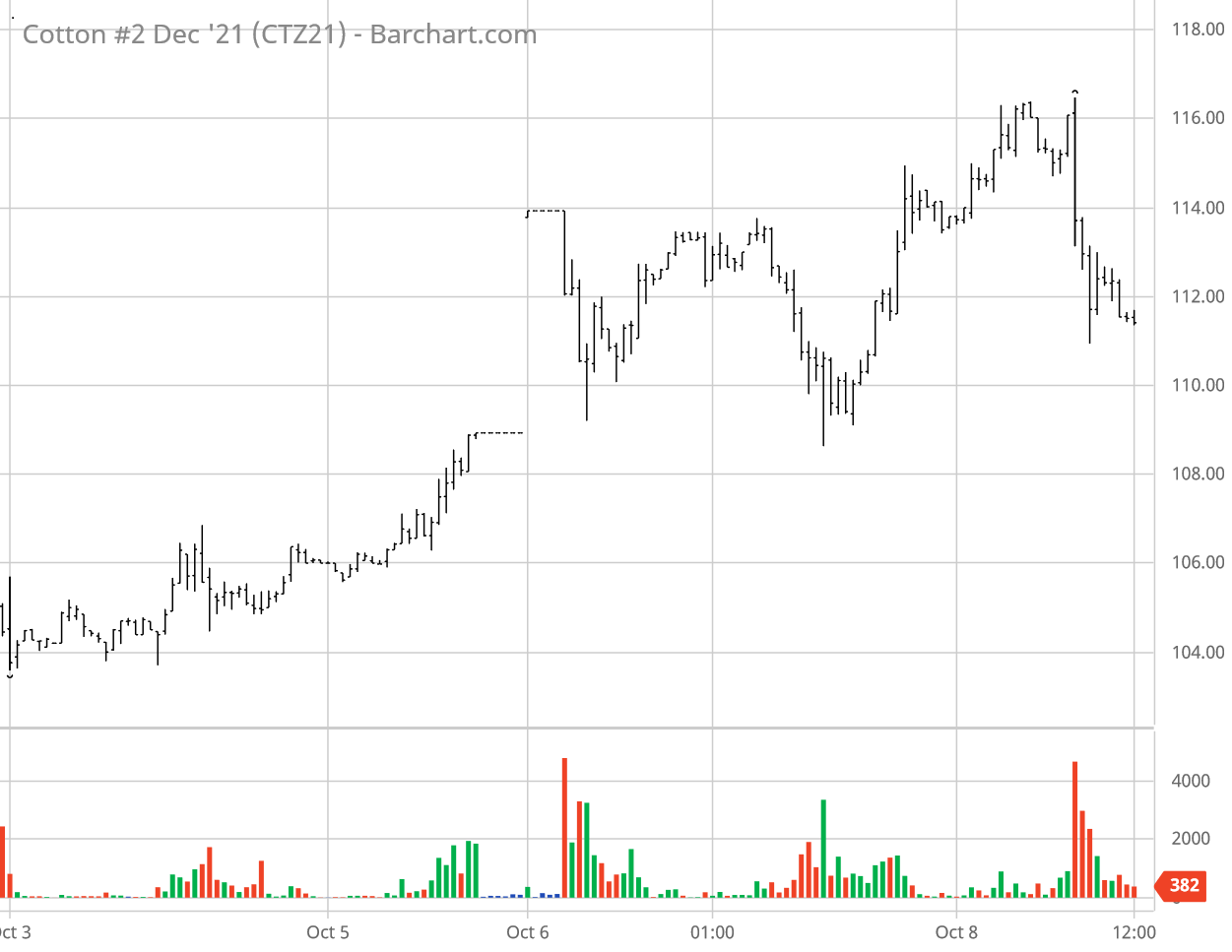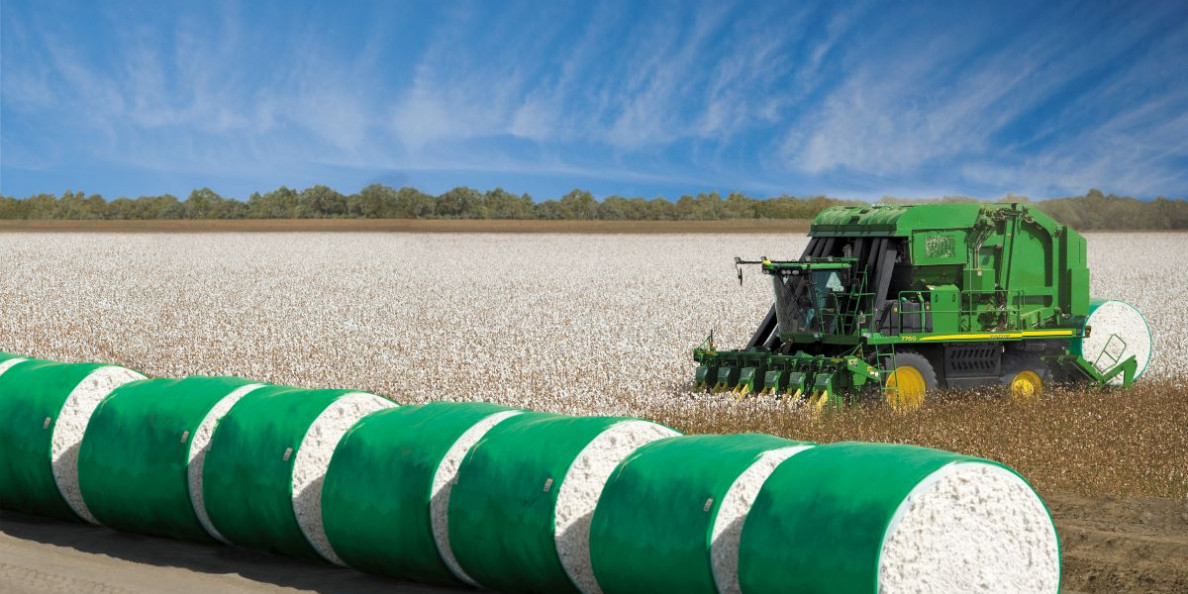For the week ending Friday, October 8, Dec’21 ICE cotton futures continued their recent rally, although differently compared to the previous surge. This week did see volatile price moves, with two limit up situations and a notable chart gap higher during the uptrend (see chart above courtesy of Barchart.com). The back-filling of that gap resulted in more of a sideways gyration, peaking with Friday’s high of 116.48 cents per pound. Friday settled at 110.60 cents per pound, down one cent on the day and almost six cents from the daily high.
The pattern of ICE cotton futures open interest was more static this week, suggesting less outright speculative buying, accompanied perhaps by profit taking. The regular weekly snapshot of speculative open interest showed 7.631 additional hedge fund longs, as of Tuesday, October 5. This was a smaller week-over-week increase than was observed the previous Tuesday.
Chinese cotton futures and world prices were higher this week (note: a holiday-shortened week in China). In contrast to cotton, grain and oilseed futures markets were flat to lower this week. U.S. stock indices gyrated in a modest uptrend this week, as did the U.S. dollar index. In other words, cotton’s remarkable rally has been independent of other risky asset markets.

Cotton-specific fundamental factors this week included lower weekly U.S. cotton export sales, continuing good U.S. cotton condition ratings, but unwelcome excess rain in the Delta and Southeast. U.S. cotton certified stock levels continued to erode after peaking in late June, which is perhaps more evidence of good export demand.
To the extent that the current rally is speculatively fueled, it could unpredictably and dramatically reverse. Speculative buying can be influenced by animal spirits, risk on/off developments, and other effects that have little to do with ag market fundamentals. I would also point out that this isn’t 2010, the last time we had dollar-plus cotton. Back then there was a global shortage, and the surging cash market pulled the futures market along for the ride. That is not the current situation.
The movement of ICE cotton futures has implications for potential hedging strategies. The price volatility in 2021 is a reminder why it is risky to hedge by selling futures — but it’s also made some option premiums more expensive. As new crop Jul’22 cotton futures risen in the last few months, a near-the-money 85 call option has increased in value. Between September 23 and October 7, an 85 call option on July’22 rose from 9.45 cents to 22.77 cents per pound. Had it been purchased in the previous months (i.e., back when some new crop was being cash contracted in the mid-80s), the current uptrend clearly illustrates the insurance aspect of call options. In general, a call option represents upside price risk protection, in combination with cash contracting or selling futures. Looking further out, the rising new crop Dec’22 futures contract has resulted in an out-of-the-money 80 cent put option premium declining from fourteen cents in January to 5,45 cents per pound by October 7. If Dec’22 futures keep rising, this and similar put options will become increasing affordable down-side price insurance. That is, once purchased, it will buffer unexpected declines in Dec’22 futures by increasing in value.
For more details and data on Old Crop and New Crop fundamentals, plus other near term influences, follow these links (or the drop-down menus above) to those sub-pages.
Source: TAMU

